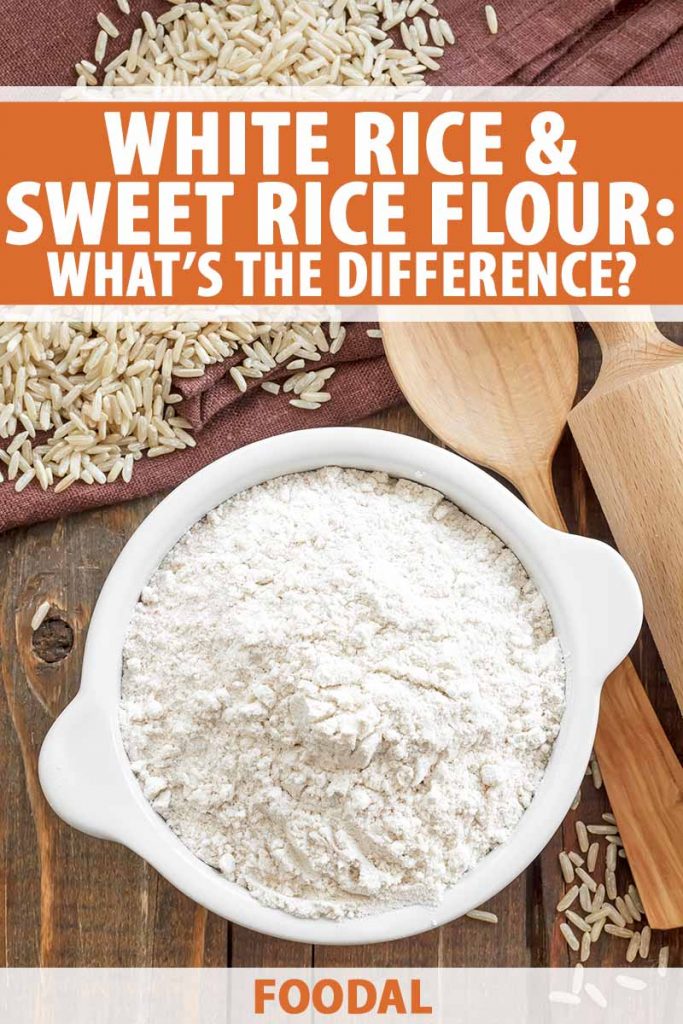We occasionally link to goods offered by vendors to help the reader find relevant products. Some of these may be affiliate based, meaning we earn small commissions (at no additional cost to you) if items are purchased. Here is more about what we do.
Living gluten-free since I was diagnosed with celiac disease, I’ve had no choice but to become acquainted with white rice flour. However, when I realized that I didn’t know the difference between it and sweet rice flour – which is also white – I thought you might be wondering, too.
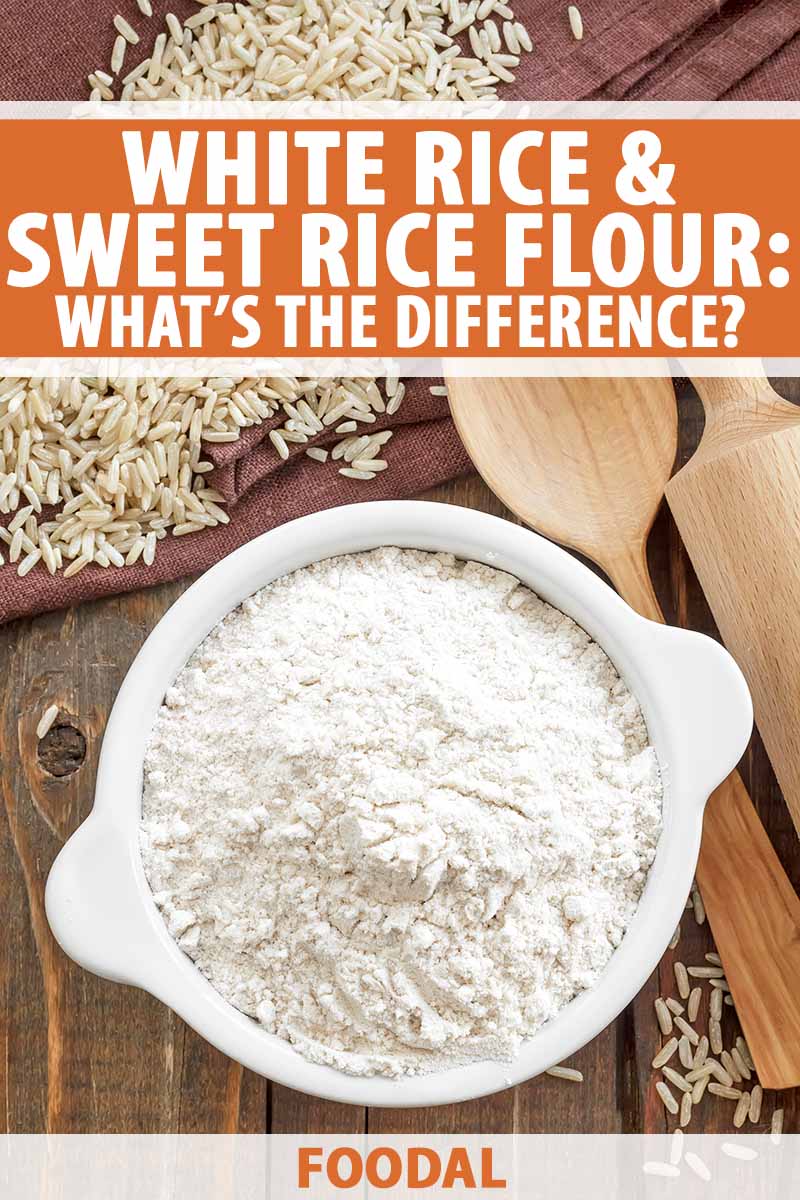
In this brief article, I’ll share what I’ve learned about both types and whether or not we can substitute one for the other in recipes.
Here’s what I’ll cover:
White vs. Sweet Rice Flour
Let’s jump right in.
Go to the Source
To begin, there are many different types of rice. One of the chief ways to differentiate them is according to the size of the grains. You may see these categorized as long, medium, and short grain.
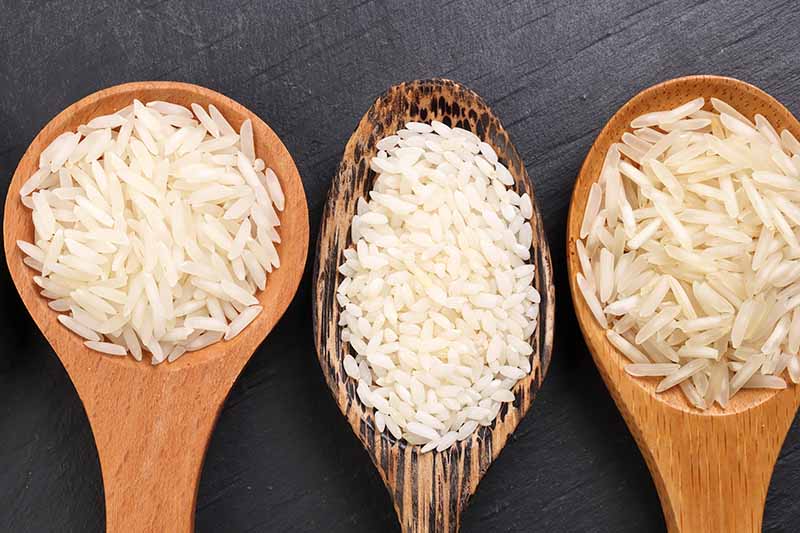
Long-grain has the lowest starch content and is a staple in many households. It cooks to an airy, non-clumping consistency. The grains are about four to five times as long as they are wide.
Medium-grain varieties, such as Arborio, have more starch and a moist, tender bite good for making risotto and paella. These are correspondingly smaller in size, about two to three times longer than they are wide.
And then there is short-grain. It has the most starch, making it plump, and perfect for sushi rolls since it likes to cling together. It also has the tiniest grains, only slightly longer than they are wide.
Rice of different grain sizes can also exhibit other qualities as well. White is refined, whereas brown is not. Some types may have a different color, such as red or purple. And some long- and medium-grain varieties are aromatic, like basmati and jasmine.
Finally, there is sticky rice. Also known as glutinous or sweet rice, it is chiefly produced from short grain varieties, but may be any length. Available varieties include Thai long-grain sticky rice, and short-grain Japanese sticky rice.
Producers of white rice flour use mostly long and sometimes medium grains. They remove the outer hull, which is inedible, as well as the bran and the germ, and grind the remaining starchy endosperm into a fine but grainy powder with a low starch content.
Bakers and noodle makers often combine it with a lighter ground grain, seed, or root, like tapioca, or a more flavorful one, like quinoa.
Manufacturers also remove the hull as well as the bran and germ to make the sweet rice flour, and cook and dehydrate the remaining starchy endosperm. Then they grind the grain finely for a smooth, high-starch product.
The science behind the different starch contents of long-, medium-, and short-grain rice revolves around two polysaccharide polymers, amylose and amylopectin.
Amylose is a straight-chain starch molecule. The more of these there are, the less clumping the grain does when it’s cooked.
Amylopectin is a branched-chain starch molecule. The more branching chains there are, the stickier the results.
Medium-grain products typically fall in between the two and clump slightly.
Long-grain types generally have the most amylose and almost no amylopectin. They become translucent and they don’t clump when cooked.
The short-grain variety typically has the most amylopectin and the least amylose. It has opaque or waxy grains that clump or become sticky during cooking.
Comparing the Two
If you look at them from a nutritional standpoint, the two types of rice flour are very similar.
Per their respective labels on products from Bob’s Red Mill, both have 150 calories, three grams of protein, and zero grams of fat per quarter-cup serving.
They differ slightly in dietary fiber, carbohydrates, and potassium.
The white variety has zero grams of fiber, 33 grams of carbs, and 46 milligrams of potassium.
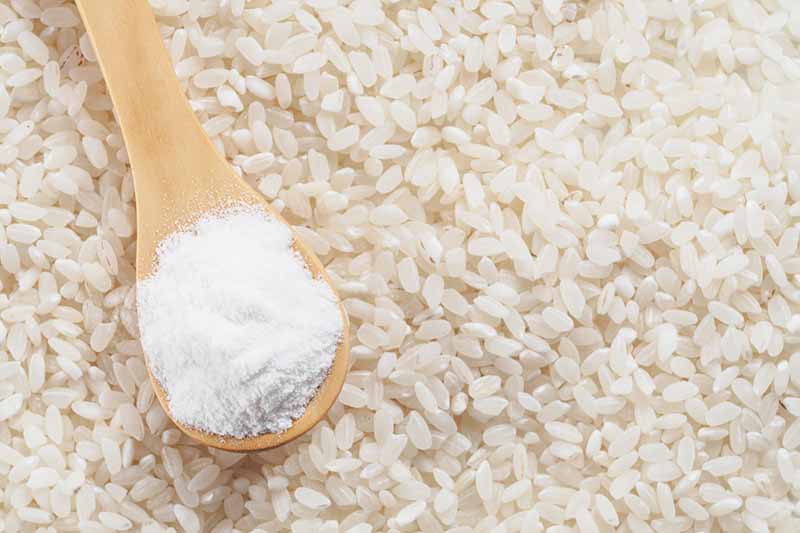
The sweet type has one gram of fiber, 34 grams of carbs, and 48 milligrams of potassium per serving.
Here’s where you have to stay with me because it will sound like I’m contradicting myself.
The high starch content of the sweet variety makes it “glutinous.”
Whoa. What?
Other names for it, as mentioned above, are glutinous or sticky. But this sticky starchiness is not gluten like we find in wheat. The adjective is merely descriptive, if confusing, and describes the characteristic chewy bite it adds to the recipes we prepare with it.
The glutinous quality makes this type best for making dumplings and desserts, such as Japanese mochi. Xanthan gum can also be added to the batter for baked goods made with gluten-free ingredients, to improve elasticity.
On the other hand, the white variety does not have a high enough starch content to bind and create a stretchy consistency. It is a gluten-free alternative to wheat in gluten-free baked goods and pasta, it can be used as a gravy and sauce thickener, and it’s also used to make batter for fried foods, like tempura.
And guess what else?
Sweet rice is not sweet!
Both sweet and white types are so mild, in fact, they are considered flavor neutral.
And while neither is stellar from a nutritional standpoint, a 2020 study demonstrates the potential to develop new flours with higher protein contents to improve the dietary value of prepared gluten-free foods.
However, please note that foods high in amylopectin, like sweet rice flour, have a higher glycemic index than foods that are not, like the white grain variety.
If you need some for your next cooking project, white rice flour from Bob’s Red Mill is available on Amazon. You can find the sweet variety from Bob’s Red Mill on Amazon too.
Can You Swap One for the Other?
Now that we know that one is low in amylopectin and the other is very high, it makes perfect sense that these types of flour are not interchangeable.
When a recipe calls specifically for one, don’t substitute the other, or you’ll alter the expected consistency of whatever you’re cooking or baking.
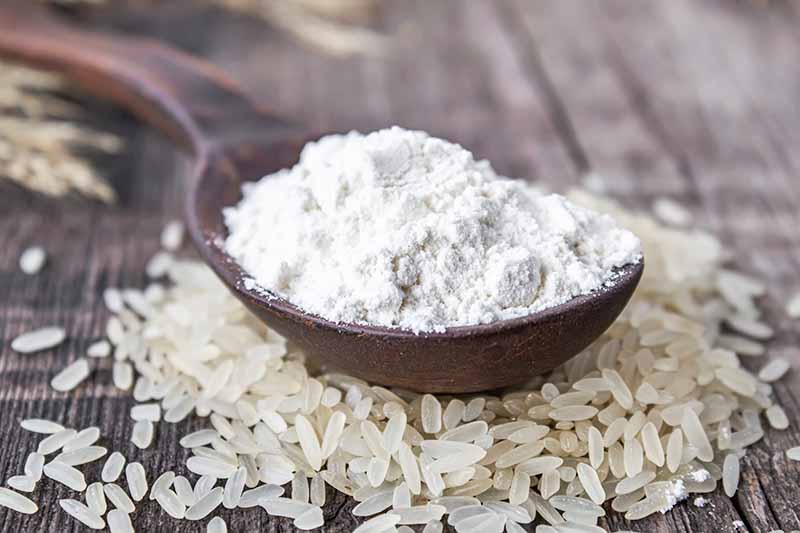
In addition to white varieties, you may also come across brown rice flour, a whole grain product with the bran included.
Like other whole grains, the milled ingredients made with the brown variety has not been through a process of refining and polishing before grinding it into flour, which removes the bran and the germ.
You’ll find it advertised as being high in dietary fiber, but it’s important to point out that it only contains about one gram per serving. However, brown rice flour is superior to its refined white counterpart in that it contains 114 milligrams of potassium per serving, as well as other fats, vitamins, and minerals that are removed in processing.
I mention it here because substituting brown for white flour is not a good idea unless listed as a recipe alternative. It is dense, brings a distinct nutty flavor to foods, and is the equivalent of substituting whole wheat for regular all-purpose in other baked goods.
Use Your Knowledge in the Kitchen
White and sweet rice flours are staples of Asian-style and gluten-free cooking.

Knowing how they differ and using them appropriately are ingredients for success.
Why not hone your skills with two delicious recipes from Foodal?
Our gluten-free Boston cream doughnuts call for two ground grains – white rice and oat flour – plus almond meal to create a moist, sweet, cake-like treat.
And our homemade Japanese-style mochi are confections that showcase the chewy consistency of sweet ground rice.
We can’t wait to hear how they turned out in the comments section below!
If you found this article informative and want to experiment with other types of ground grains and legumes, we recommend reading the following guides next to boost your knowledge:
- Cooking with Gluten-Free Garbanzo Bean Flour
- Foodal’s Guide to Flour: Sifting Through the Options
- What Is Einkorn Flour and How Do You Use It?
© Ask the Experts, LLC. ALL RIGHTS RESERVED. See our TOS for more details. Uncredited photos via Shutterstock.
About Nan Schiller
Nan Schiller is a writer from southeastern Pennsylvania. When she’s not in the garden, she’s in the kitchen preparing imaginative gluten- and dairy-free meals. With a background in business, writing, editing, and photography, Nan writes humorous and informative articles on gardening, food, parenting, and real estate topics. Having celiac disease has only served to inspire her to continue to explore creative ways to provide her family with nutritious locally-sourced food.

